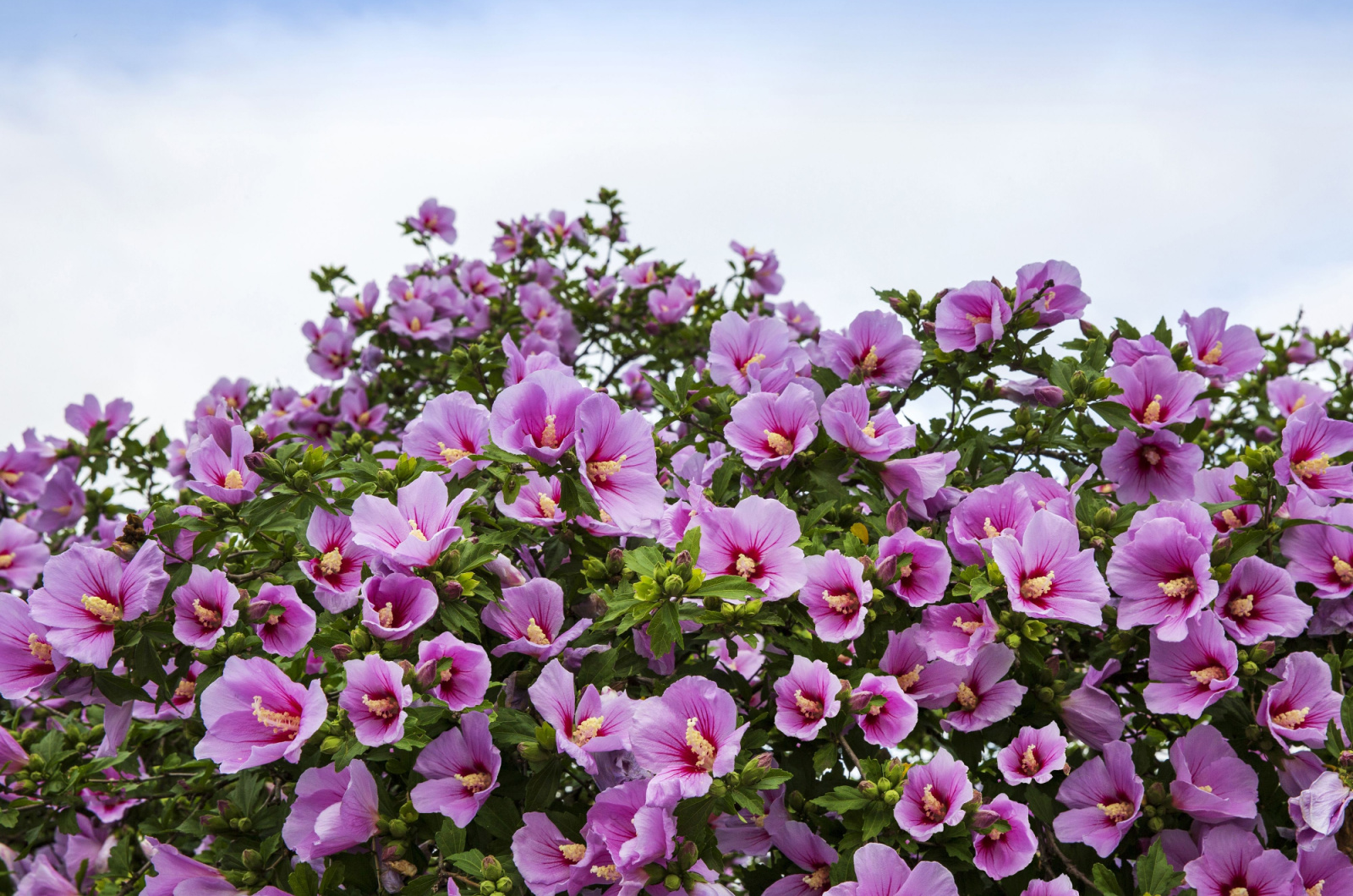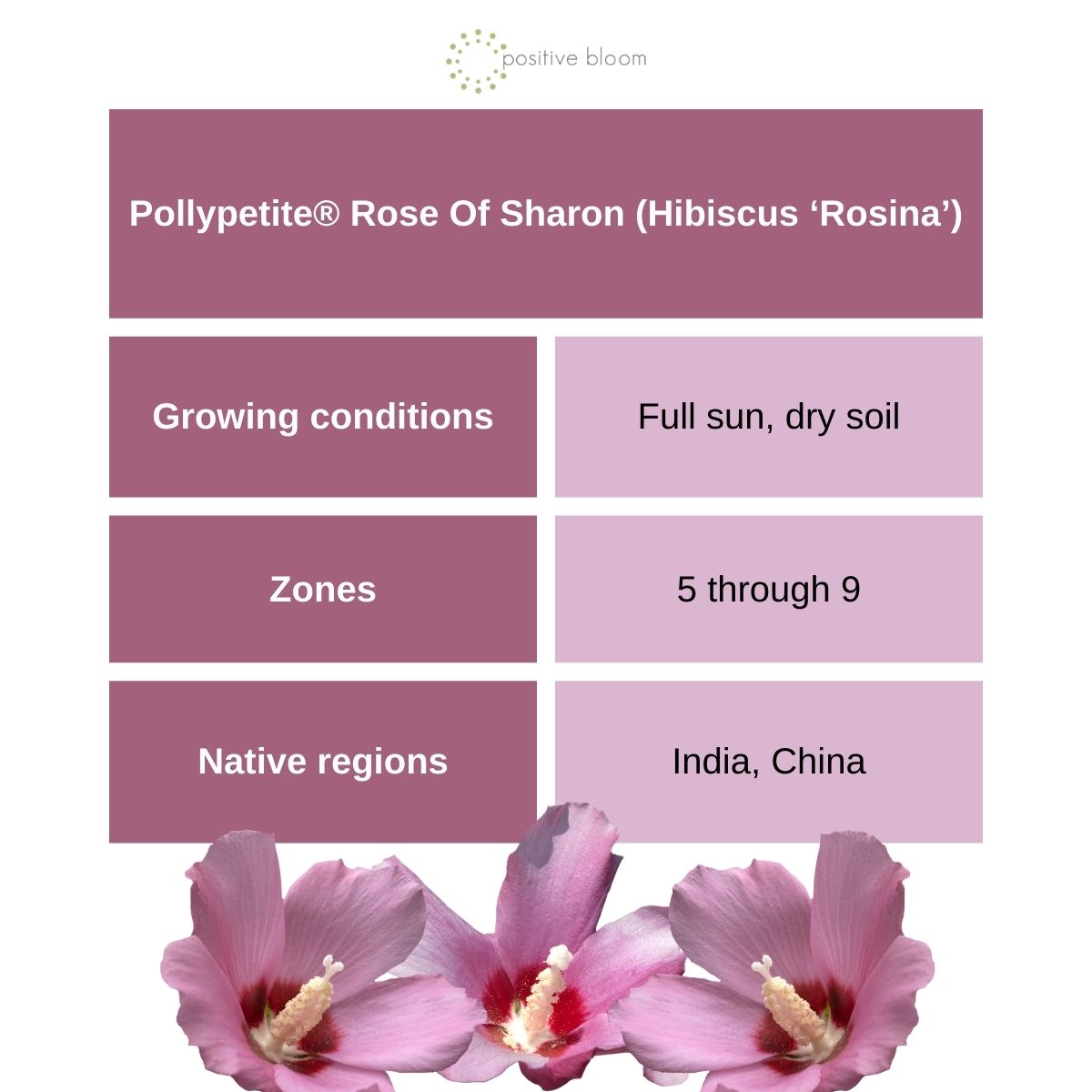Rose of Sharon, otherwise known as Althea, is a classic plant that originates from China and India. It came to America around the 1600s and is still being grown today. This hardy plant thrives in the harsh growing conditions of USDA hardiness zones 5 to 9.
Lately, botanists have been developing hybrids with unique variegations, dwarf varieties, double flowers, and also cultivars that don’t produce seeds. The Rose of Sharon is known for producing unwanted seedlings, so these new cultivars have quickly gained popularity!
University of Tennessee Gardens have introduced about 25 varieties, with Pollypetite® being my favorite – it has maple-like green leaves and beautiful soft pink flowers that can truly add elegance to the garden.
This cultivar looks more like some tropical hibiscus plant than a typical Rose of Sharon, but it’s not as needy. When kept in good growing conditions with long sun exposure, blooms grow profusely.
Not only are these flowers aesthetically pleasing, but they are also great for attracting butterflies, hummingbirds, and bees.
This is actually a second-generation hybrid that efficiently eliminates the issue of weed seedlings in your garden. So, your Rose of Sharon won’t end up spreading all over the garden and disturbing other plants nearby.
This cultivar was made by horticulturist Polly Hill, who crossed the Hibiscus paramutabilis × syriacus, ‘Tosca’ and ‘Lohegrin’. The hybrid was given the cultivar name “Rosina” in 1997, which has changed and is now being sold under the brand name “Pollypetite®.”
This cultivar can grow in different soil types. It is drought tolerant when established and can keep deer at bay. Like some other dwarf shrubs, starting out in the landscape can be a little slow, but it is ultimately well worth the wait.



